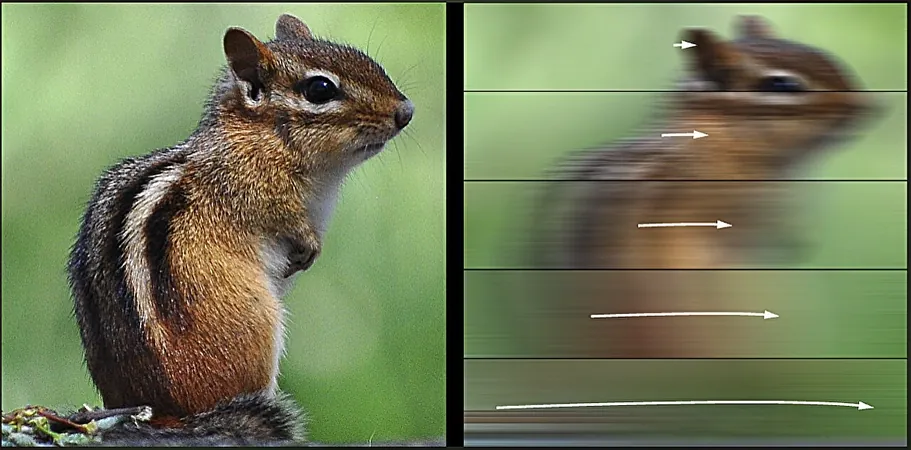
Revolutionary Study Reveals How Your Eyes Determine What You Can See!
2025-05-08
Author: Jia
Unlocking the Secrets of Vision: Fast Eye Movements and Perception
Ever wondered why some objects seem to vanish before your eyes? A new groundbreaking study has uncovered the fascinating link between our eye movements and the speed at which we perceive motion.
When you shift your gaze rapidly, also known as saccades, your eyes dart around two to three times per second. This swift movement blurs the visual world, making it appear as if fast-moving objects are simply absent. But why does this happen?
The Science Behind Saccades and Visibility
Researchers from the Cluster of Excellence Science of Intelligence (TU Berlin) have made a stunning discovery: the speed of our eye movements dictates the threshold at which we can no longer see fast-moving objects. In their study published in *Nature Communications*, they revealed that when visuals—like a chipmunk scurrying or a high-speed tennis ball—move at speeds that align with our own saccades, they become invisible to us.
This implies that our visual limitations are not solely rooted in physical characteristics; they are also significantly influenced by our eye movements.
Can Your Eye Speed Make You a Better Observer?
Curiously, the speed of our saccades varies from person to person. Those with quicker eye movements may have an edge in observing swift action—think top baseball hitters, elite gamers, or wildlife photographers. Their rapid eye movements allow them to see objects moving at speeds that could elude others.
How Body Movements Shape Perception
This research is a thrilling revelation, positing that our bodily movements directly enhance or limit our sensory capabilities. Leading researcher Martin Rolfs states, "What we can sense in the physical world is fundamentally dependent on our sensory proficiency."
He explains how we are blind to certain wavelengths, like infrared, because our eyes lack sensitivity. The study asserts that our limitations are also governed by the actions we perform, particularly our saccadic movements.
The Blindness of Motion Perception
During saccades, our retinas receive the same type of motion as if a camera were swiftly panning. But we are blissfully unaware of this motion. Rolfs notes, "Stimuli following our saccadic patterns, even when our eyes are still, disappear. This suggests that our eye movements tightly constrain what our sensory system can detect from the world around us."
This fascinating interaction showcases an intelligent adaptation of our visual system; it remains sensitive to motion but only to the speeds characteristic of our saccades, leaving those fast speeds unnoticed, yet processed by the brain.
A Call for Interdisciplinary Collaboration
Rolfs concludes that the intricate relationship between our visual and motor systems has been overlooked for too long. He advocates for collaboration between motor control researchers and perception scientists, stating, "These fields should be conversing, as they hold the key to understanding how we interact with our world."
The implications of this research are vast, potentially affecting fields from sports training to visual technology design, as we unravel how our perception is not just a passive experience but a dynamic interaction between our senses and movements.

 Brasil (PT)
Brasil (PT)
 Canada (EN)
Canada (EN)
 Chile (ES)
Chile (ES)
 Česko (CS)
Česko (CS)
 대한민국 (KO)
대한민국 (KO)
 España (ES)
España (ES)
 France (FR)
France (FR)
 Hong Kong (EN)
Hong Kong (EN)
 Italia (IT)
Italia (IT)
 日本 (JA)
日本 (JA)
 Magyarország (HU)
Magyarország (HU)
 Norge (NO)
Norge (NO)
 Polska (PL)
Polska (PL)
 Schweiz (DE)
Schweiz (DE)
 Singapore (EN)
Singapore (EN)
 Sverige (SV)
Sverige (SV)
 Suomi (FI)
Suomi (FI)
 Türkiye (TR)
Türkiye (TR)
 الإمارات العربية المتحدة (AR)
الإمارات العربية المتحدة (AR)